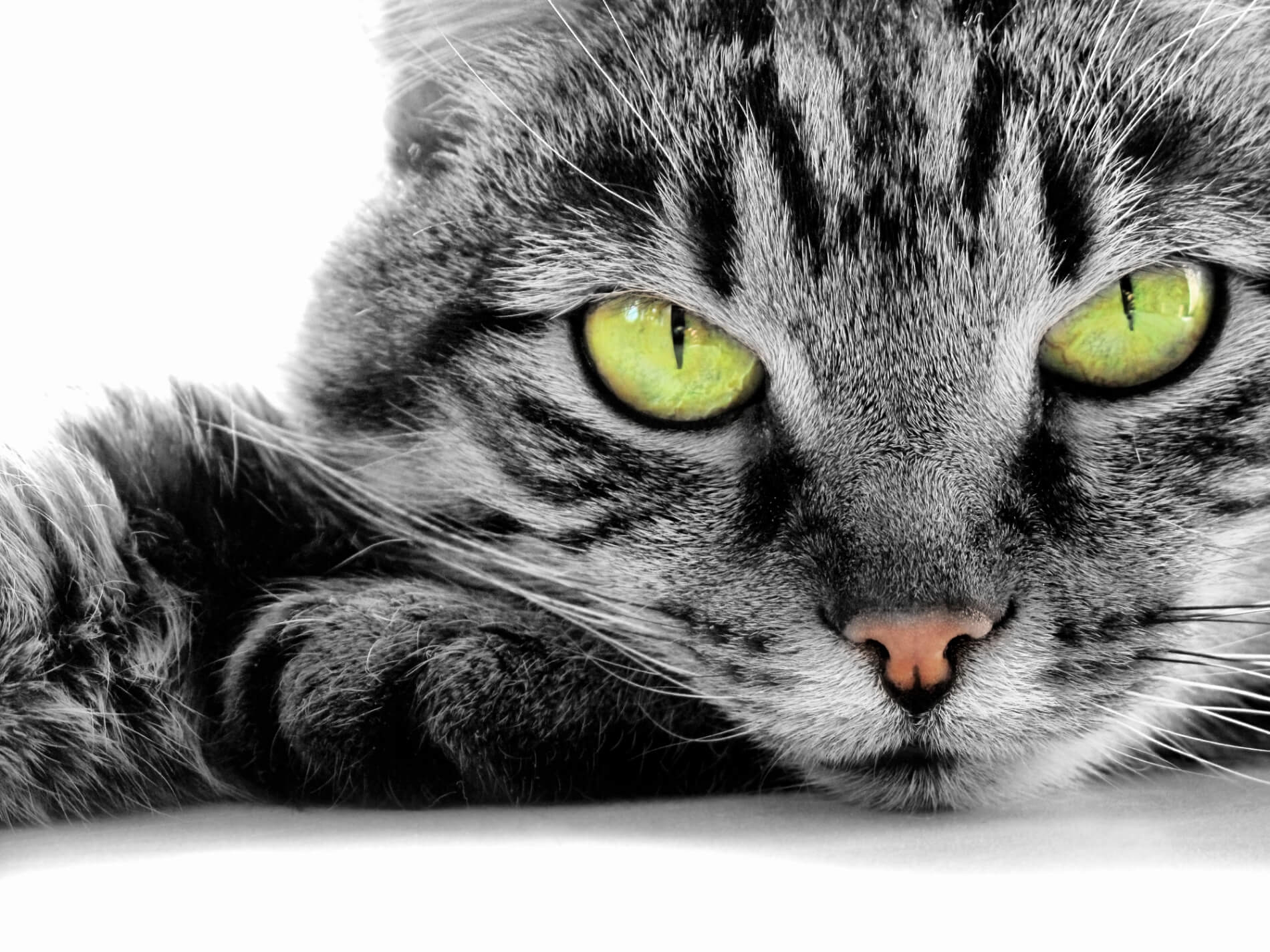Skeletons and Muscles: Anatomy of Cats

Cats are amazingly quick and flexible. The animals can climb remarkably well and jump very far in relation to their length. All these skills are due to the unique anatomy of their powerful body. In this article, we therefore want to take a closer look at the skeleton and the anatomy of cats.
The main points about the anatomy of cats at a glance
- A cat's skeleton is made up of approximately 244 individual bones.
- There are around 500 muscles in a cat's body.
- When sprinting, cats can reach speeds of up to 48 kilometres per hour and when jumping, they can overcome about six times their body length.
- Cats have five toes on their front paws and four on their back paws.
- A balanced diet and avoiding obesity are very important for a healthy musculoskeletal system.
How many bones are in a cat's body?
A cat skeleton consists of approximately 244 bones. Depending on the breed of cat and the length of the cat's tail, the exact number of bones may vary slightly.
The skull alone has 29 individual bones in total. The cat's spine is made up of around 50 vertebrae. About 20 of these are located in the animal's tail.
Unlike in humans, a cat's collarbone is small and not connected to any other bones, but is buried in the muscles of the shoulder region. This improves mobility even further and ensures that the chest is narrow and the cat can squeeze through tiny gaps.
How many muscles does a cat have?
The speed and elegance with which cats move around is not least due to their muscles. Cats have altogether around 500 individual muscles that help them to jump and frolic around as well as to stalk potential prey almost silently.
Cats' limbs
Cats have very muscular legs. This applies in particular to the animals' hind legs, with which they can cover about six times their own body length when jumping without a run-up.
In addition, they reach a speed of around 48 kilometres per hour when sprinting. While this is not even half as fast as a cheetah, their speed is without a doubt considerable and more than sufficient to capture the occasional mouse, for example.
However, cats don't have much endurance. After sprinting or frolicking around, the first thing they do is to relax.
Cats' paws
Cats have five toes on their front paws, with only four of them touching the ground. The fifth toe is called the dew claw. It sits a little further up and has no practical use for running. On cats' hind paws there are only four toes.
Of course, cats use their paws primarily for movement. Apart from that, the animals also need them and their sharp claws for other purposes, such as fighting with other cats or catching prey.
Last but not least, cats also use their paws for grooming by first moistening them with their tongues and then wiping their faces with them.
Since there are many nerves in the cat's paws, they are quite sensitive. This is noticeable, among other things, by the fact that the four-legged friends usually do not like to be touched on their paws.
Avoiding injuries in every day life
Apart from their proverbial nine lives, cats have the reputation of always landing on their paws when they fall. However, not only have cats obviously just only one life, it is only partly true that the animals always land on their paws.
In many cases, cats do survive falls unharmed thanks to their quick reflexes. However, this does not mean that the four-legged friends cannot sustain injuries such as fractures.
As a cat owner, you should always keep this in mind and minimise the risk of injury, at least in your home, by making the balcony and windows cat-proof.
If, despite all the precautionary measures, an accident happens and you notice, for example, that your cat is limping or lame, an immediate visit to the vet is of course essential.
Supporting cats' musculoskeletal system
Keeping cats' musculoskeletal system healthy and well functioning is vital to their well-being. Unfortunately, joint problems are not uncommon in four-legged friends.
In many cases, their development is directly or indirectly related to errors in nutrition. In addition to low-quality food and the associated lack of important nutrients, obesity in particular can promote problems such as arthritis in cats.
In order to avoid this, you should therefore choose high-quality cat food and feed it in appropriate amounts from an early age. In addition, it may make sense to provide the cat with additional nutrients for the musculoskeletal system. You can achieve the latter, for example, with the Joints & Bones capsules from I love my cat.
Also make sure that your four-legged friend is sufficiently physically active without taking unnecessary risks of accidents or injuries.
Our conclusion about the anatomy of cats
As you can see, cats' anatomy is unique in some ways. Thanks to the cat's skeleton, the strong muscles and the tendons and ligaments, the animals reach the desired speed, mobility and jumping power.
In order to keep it that way for as long as possible and to keep your cat fit and active even in old age, it is important to ensure an optimal supply of nutrients with high-quality cat food right from the start.
In the I love my cat range you will find everything you need for this purpose, including kitten food, dry and wet food for adult cats and natural food supplements.
£19.39
£18.64 £22.37





